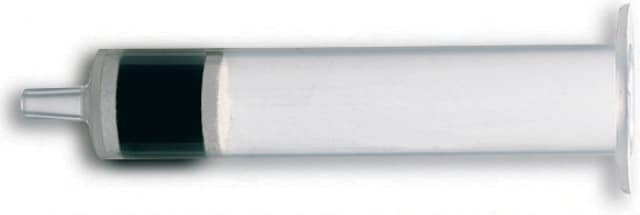Wichtige Dokumente
34852
Ethyl alcohol, pure
≥99.8%, suitable for HPLC, absolute
Synonym(e):
Ethylalkohol
About This Item
Empfohlene Produkte
Produktbezeichnung
Ethanol, absolute, suitable for HPLC, ≥99.8%
Dampfdichte
1.59 (vs air)
Qualitätsniveau
Dampfdruck
44.6 mmHg ( 20 °C)
Qualität
absolute
Assay
≥99.8%
Form
liquid
Selbstzündungstemp.
683 °F
Expl.-Gr.
19 %, 60 °F
Grünere Alternativprodukt-Eigenschaften
Safer Solvents and Auxiliaries
Learn more about the Principles of Green Chemistry.
Methode(n)
HPLC: suitable
Verunreinigungen
≤0.001% free acid (as CH3COOH)
≤0.001% non-volatile matter
≤0.2% water (Karl Fischer)
≤1 ppb fluorescence (quinine) at 254 nm
≤1 ppb fluorescence (quinine) at 365 nm
Durchlässigkeit
210 nm, ≥20%
225 nm, ≥50%
240 nm, ≥80%
260 nm, ≥98%
Brechungsindex
n20/D 1.3600 (lit.)
bp
78 °C (lit.)
mp (Schmelzpunkt)
−114 °C (lit.)
Format
neat
Grünere Alternativprodukt-Kategorie
SMILES String
CCO
InChI
1S/C2H6O/c1-2-3/h3H,2H2,1H3
InChIKey
LFQSCWFLJHTTHZ-UHFFFAOYSA-N
Suchen Sie nach ähnlichen Produkten? Aufrufen Leitfaden zum Produktvergleich
Allgemeine Beschreibung
Vorsicht
Fußnote
Signalwort
Danger
H-Sätze
Gefahreneinstufungen
Eye Irrit. 2 - Flam. Liq. 2
Lagerklassenschlüssel
3 - Flammable liquids
WGK
WGK 1
Flammpunkt (°F)
55.4 °F - closed cup
Flammpunkt (°C)
13 °C - closed cup
Hier finden Sie alle aktuellen Versionen:
Analysenzertifikate (COA)
Leider sind derzeit keine COAs für dieses Produkt online verfügbar.
Wenn Sie Hilfe benötigen, wenden Sie sich bitte an Kundensupport
Besitzen Sie dieses Produkt bereits?
In der Dokumentenbibliothek finden Sie die Dokumentation zu den Produkten, die Sie kürzlich erworben haben.
Unser Team von Wissenschaftlern verfügt über Erfahrung in allen Forschungsbereichen einschließlich Life Science, Materialwissenschaften, chemischer Synthese, Chromatographie, Analytik und vielen mehr..
Setzen Sie sich mit dem technischen Dienst in Verbindung.







